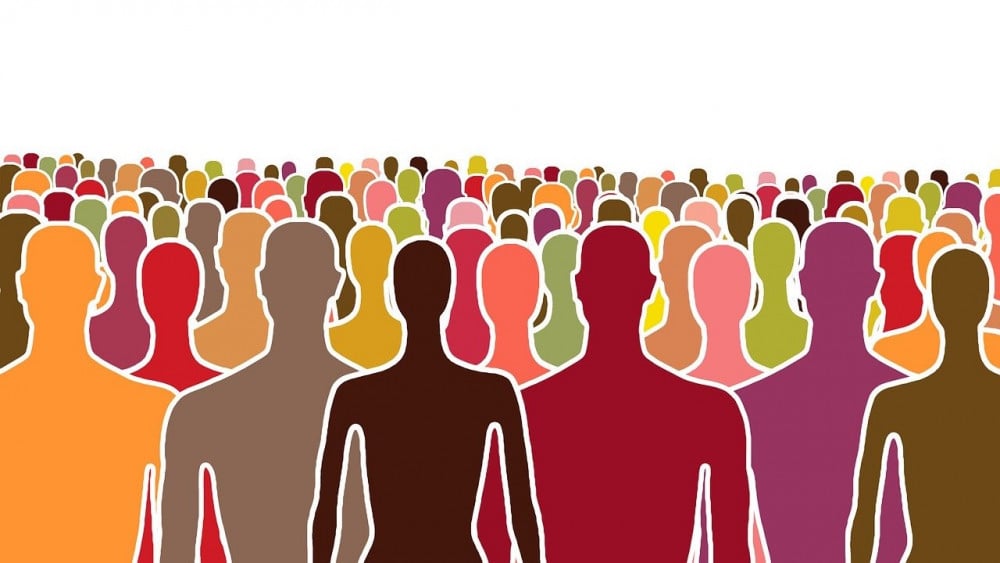
The percentage of foreign nationals in South Korea will exceed 5% of the population for the first time next year, making the country a "multiracial and multicultural nation" according to the OECD's definition. This is at a much faster rate than Japan (2.38%), which accepted foreign workers before South Korea.
According to the Ministry of Justice and the Ministry of the Interior and Safety on October 27th, the total number of foreign nationals living in Korea as of the end of September was 2.514 million, or 4.89% of the total population of 51.37 million. This includes 1.957 million long-term residents with visas and 557,000 short-term residents for less than 90 days.
The share of foreigners staying in the country dropped to 3.79% in 2021 due to COVID-19 but the numbers went back up to 4.37% last year. This year, it is approaching 5% as the number of foreign workers entering the country through the employment permit system has surged. "Given the increase in the number of international students and workers since COVID-19, the share of documented foreigners is expected to exceed 5% of the population for the first time next year," said an official from the Ministry of Public Administration.
The 5% foreigner threshold to define multiracial and multicultural countries is used in census statistics and by international organizations. In fact, South Korea is the first multicultural and multiracial country outside of Europe and North America. Japan, which began accepting foreign workers in 1989, still has a foreign-born population of only 2.38% (2.99 million out of 125.41 million).
With an unprecedentedly low birth rate and an aging population, the rate of foreign worker influx into Korea is only expected to accelerate. Experts say it is imperative to overhaul the system as Korea is fast becoming the first multiracial and multicultural country in Asia. "The '5% foreigner' means that residents will encounter foreigners or people from foreign cultural backgrounds at any time and any place, including schools, workplaces, and streets, and South Korea is the first country in Asia to reach this stage," said Kim Ok Nyeo, a professor of social welfare at Sookmyung Women's University's Graduate School of Public Policy.
Becoming a multiracial and multicultural country means that at least one out of every 20 residents is a foreigner, a second-generation immigrant, or a naturalized citizen. Some argue that if you include the 429,000 undocumented immigrants in the country, Korea may already be at 5% of foreigners. If undocumented immigrants are included, the percentage jumps to 5.72%.
It is believed by some that the percentage of the population with a migrant background, which encompasses more than just resident foreigners, may have already exceeded 5%. This is due to the fact that Korea permits workers and their second-generation offspring to reside in the country on a compatriot visa, and the number of children born from immigrant marriages is rapidly increasing. The migrant background population includes naturalized citizens, second-generation immigrants, and foreigners who are currently residents by birth.
According to the OECD, the percentage of people with a migrant background in South Korea was 4.3% in 2021. Among all OECD countries, Luxembourg (73.6%), Israel (58.1%), Switzerland (54.1%), Australia (52.6%), and New Zealand (49.2%) had the highest shares of the migrant population. These countries have actively encouraged immigration as a policy. On the other hand, the United States had a migrant population of 26.2% while the EU average was 21.4%. Mexico (2.0%), Japan (2.5%), Turkiye (3.0%), and Bulgaria (3.8%) had the smallest immigrant populations among all the countries.
As the share of foreigners living in Korea grows rapidly, some worry that the country could follow in the footsteps of other countries that have welcomed foreign workers and experienced social and cultural tensions. This could lead to social conflicts such as complaints that foreigners receive national health insurance benefits, discrimination in schools, and religious conflicts.
"If the number of migrants exceeds 5 percent, they will have a significant economic and cultural impact as members of the society," said Ahn Hyun Sook, President of the Korea Multicultural Family Support Association. "Therefore, embracing cultural diversity is of utmost importance."
 SHARE
SHARE











































"In fact, South Korea is the first multicultural and multiracial country outside of Europe and North America. Japan, which began accepting foreign workers in 1989, still has a foreign-born population of only 2.38% (2.99 million out of 125.41 million)."
This is not accurate at all. Yes it is true that SK is rapidly increasing in their expats and international students, but they are nowhere near Singapore numbers and that of Hong Kong. It is indeed new for SK to have this influx of foreigners, but that is only due to their own decline in workforce management. In conclusion, they are not the first country in Asia to be multicultural. In fact Singapore government after the Gaza/Israel situation even pleaded with communities to not change the harmony they worked very hard getting to. I am not a big fan of SG ( Their gay rights suck), but when it comes to multicultural society, they beat everyone else in Asia.
15 more replies